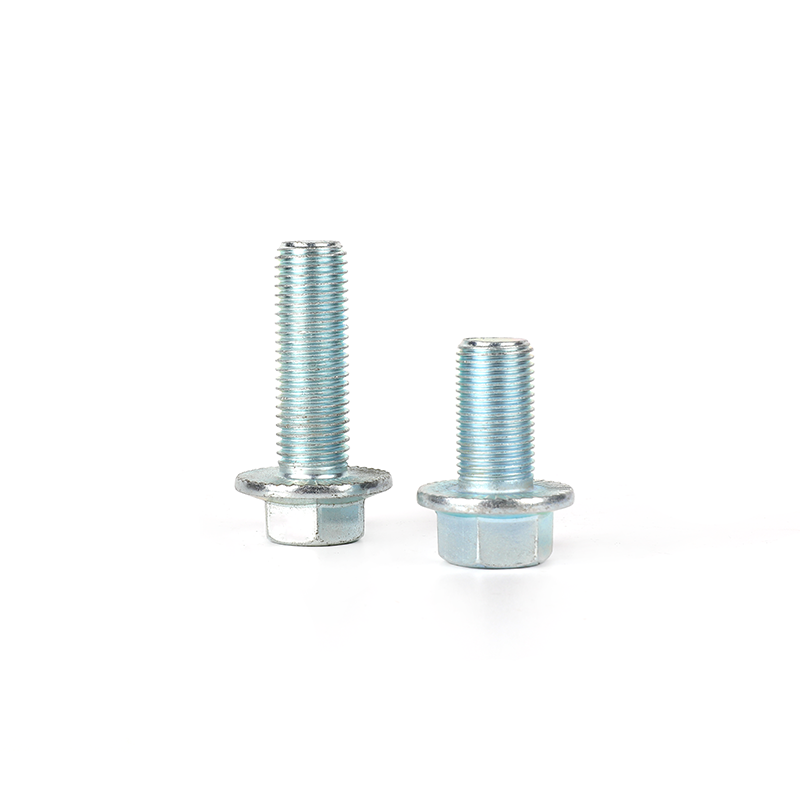Room 102, Building 13, Area A, Wanyang Zhongchuang Park, Ganyao Town, Jiashan County, Zhejiang China.

In the sealing design of fixing bolts and flange bolts, it is very important to optimize the design to prevent leakage and failure, especially in applications involving high pressure or corrosive media. The following are several ways to optimize the sealing design:
The selection of sealing materials is an important factor in ensuring sealing. Different media and working environments have different requirements for sealing materials. For example, in high temperature or chemical corrosion environments, the use of high temperature and corrosion resistant materials such as graphite gaskets, PTFE (polytetrafluoroethylene) gaskets, metal gaskets, etc. can effectively prevent leakage. In addition, the thickness of the sealing material and the degree of sealing compression should also be optimized according to the actual working conditions to ensure the sealing effect.
The flange contact surface is the key part of the sealing design, and the surface finish has a direct impact on the sealing performance. By precision machining the flange contact surface to achieve appropriate flatness and roughness, the contact effect between the sealing material and the flange can be improved to prevent medium leakage. Common surface treatment methods include grinding, polishing and sandblasting.

The preload of the bolt is an important factor in ensuring the sealing of the flange connection. Reasonable preload can ensure close contact between the flange surface and the sealing material, thereby preventing leakage. Too little preload will lead to insufficient contact, while too much preload may cause deformation or even rupture of the sealing material. Therefore, it is necessary to use appropriate bolt preload to ensure the sealing effect.
The selection of gaskets is crucial to the sealing effect. Common types of flange gaskets include flat gaskets, honeycomb gaskets and corrugated gaskets. Each gasket has different compression properties and is suitable for different working environments. For example, corrugated gaskets can provide better sealing effects in high temperature and high pressure environments, while honeycomb gaskets are suitable for some low-pressure systems. Choosing the right gasket type according to different working conditions can significantly improve the sealing performance.
In some high-pressure or special applications, a multi-layer sealing design can be used. This design usually uses multiple gasket layers of different materials and structures to provide higher sealing performance. Multi-layer sealing can effectively deal with sealing failure problems caused by factors such as temperature fluctuations, pressure changes or vibrations.
To avoid loosening of bolts, the use of locking devices (such as locking nuts or washers) can effectively improve the safety of the system. Loose bolts will cause uneven pressure on the flange contact surface, which will cause sealing failure. The locking device can prevent the bolts from loosening during use, ensuring the long-term and stable operation of the sealing system.
In order to ensure the sealing, regular inspection and maintenance are essential. The sealing of the flange joint can be monitored in real time by installing equipment such as pressure sensors or flow meters to detect potential leakage problems in time. Regular replacement of sealing materials or adjustment of bolt preload can help extend the service life of the system and prevent sealing failure caused by long-term use.
Flange deformation can also affect the sealing effect, especially in high-pressure applications. In order to avoid flange deformation, ensure that the material strength of the flange meets the requirements and adopt a suitable flange design. The use of uniform bolt arrangement and reasonable bolt tightening sequence can help reduce uneven force on the flange, thereby reducing the risk of sealing failure.
Through the optimization design of the above aspects, the sealing of bolts and flanges can be effectively improved, leakage and failure can be prevented, and the safe and stable operation of equipment and systems can be ensured.

Fix anchorbolts include bolts, washers, nuts and 4PCS cylindrical shields. By tightening the bolts, the shields tubes expand and the components can be...
See Details
Flange bolts are specially used to tightly connect pipes and components with flanges. We produce flange bolts are solid t and durablethat, compling wi...
See Details
The Grade 8.8 black oxide full-thread hexagon socket bolts have an internal hex design and needs to be used with a wrench with a hex head. Its full th...
See Details
Grade 8.8 black oxide full-thread hexagon bolts is a very common fastener and requires a wrench or hex wrench to tighten it. Our hex head bolt meet th...
See Details
This product is made of high-quality carbon steel and undergoes a rigorous heat treatment process. It has high strength, good elasticity and toughness...
See Details
This 304 stainless steel plain full-thread hexagon bolt is a kind of fasteners made of high-quality stainless steel material and has corrosion resista...
See Details
This plain round flat head weld shoulder bolt is a fastener suitable for a variety of welding applications. Its flat head and round head design makes ...
See Details
This Grade 12.9 zinc plated countersunk head square neck plow bolt has the advantages of high precision, high operability, high strength, and high ten...
See Details